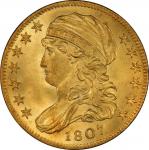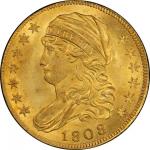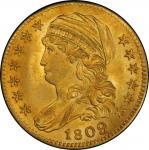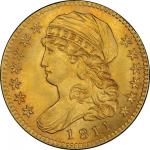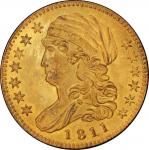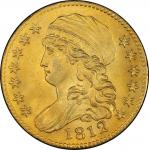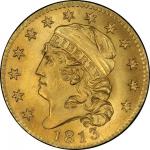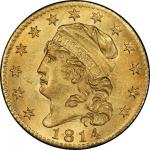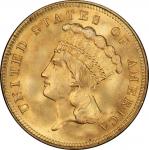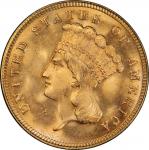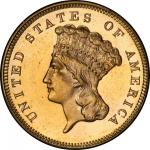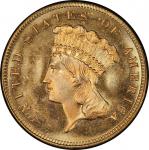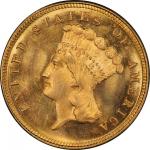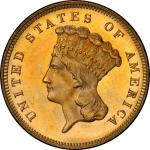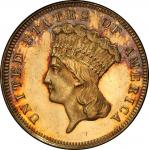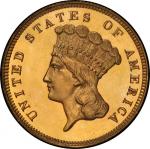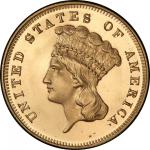“I have duly received your letter of the 25th. proposing the appointment of an assistant engraver to the mint at a salary of 600 D. and that Mr. Reich should be the assistant. You are so exclusively competent to decide on the want of such an officer, that I approve the proposition on the faith of your opinion. With respect to the person to be appointed, my knowledge of the superior talents of Mr. Reich concurs with your recommendation in the propriety of appointing him.” — Thomas Jefferson to Robert Patterson, March 29, 1807 A radiant soliform gem, this coin’s current preservation approximates its state the instant these golden surfaces were released from the dies. The luster is satiny beyond compare, bright and frosty in an even shade of the richest golden yellow. A few tiny spots are seen on the obverse, each a hallmark of originality and evidence of original surface, seen above star 7, inside of star 11, and on Liberty’s shoulder above her lowest curl. While the surfaces are essentially pristine, an unquestionably attractive quality, perhaps more importantly those surfaces are fresh and frosty, exhibiting an originality that persists on few gold coins of this era. The hairlines present are single, wispy artifacts of trivial consequence. What marks are present require detective work to locate, including a single nick at the base of the eagle’s wing at left. A short line-like impression on Liberty’s shoulder and a mark of nearly identical shape and dimensions below star 6 appear to be as struck. The striking sharpness is superb, showing fully detailed stars and devices, though the outer reaches of the denticles show some roundness as they turn into the rim. The outer point of star 13 shows the familiar scallop, long thought to be the hallmark of John Reich’s diework. The scalloped 13th star appears in 1807 as Reich took his new post, and it disappears after he left the Mint’s employ a decade later. A short thin die crack stretches from the denticles to the bust tip and continues across Liberty’s drapery to the curve left of the numeral 1. The dies have clashed twice, with crisp impressions of the shield paleways in Liberty’s hair and two impressions of the rounded top juncture of the eagle’s wing at left to its body and neck visible left of the obverse centering dots. Only the faintest vestige of a clash appears off Liberty’s chin, the rest of the impression having been lapped away in the field. The reverse is uncracked and unclashed, making this coin equivalent to Bass-Dannreuther state c/a, the earliest state of this die combination. Many details of the reverse show light strike doubling, particularly prominent among the peripheral designs and legends. The beginning of the Capped Bust design type in 1807 heralds the appointment of engraver John Reich to a permanent position the United States Mint. Reich first arrived in Philadelphia from Germany in 1800. A year later, he performed his first work for the Mint, executing the dies of the 1801 Thomas Jefferson inaugural medal that also served to commemorate the 25th anniversary of the Declaration of Independence. After several years assisting with medals by contract, Reich was finally hired as a full time engraver at the Mint on April 1, 1807. He began working immediately. On April 3, Mint Director Robert Patterson wrote to Thomas Jefferson that “Mr. Reich is now preparing a set of new dies, in which some improvements in the devices will be introduced (adhering, however, strictly to the letter of the law) which it is hoped will meet with public approbation.” The dies, undoubtedly master dies of this new design, could have been those for half dollars or half eagles. Mint Director James Ross Snowden wrote in 1860, “if our conclusions be correct, the first issue of coins of the new type took place on the 30th of September, and consisted of 15,967 half eagles.” He added in a footnote that “there was no gold of any kind coined at the Mint after the middle of June, until this time,” referring to the late September delivery of half eagles. Just two varieties of Capped Bust half eagles were coined before the end of 1807, struck from the same obverse die and two different reverse dies. The first reverse die developed a crack and was replaced by this one, which was also used for the first two die marriages of 1808. Snowden’s math has turned out to be inaccurate in retrospect, and modern authorities agree on a total mintage figure of 51,605 1807 half eagles of this type. Most of them were from this die marriage. “PADRES BOSS SELLING COIN STASH TO AID KIDS” trumpeted the headline of a 1999 New York Post article, highlighting this coin as the primary attraction of the then-upcoming Sotheby’s sale of the John and Rebecca Moores Collection. According to the August 3, 1999, article, “Moores said he’s giving up his extremely rare 1807 Liberty coin in hopes of finding cures to several childhood diseases. The coin, which has never been in circulation and is virtually untouched, is expected to fetch a record price of more than $200,000 at auction here at Sotheby’s.” John and Rebecca Moores, then the owners of the San Diego Padres baseball team, donated the proceeds of their coin sale to the Institute for Childhood and Neglected Diseases at the Scripps Research Institute near San Diego. This coin was also singled out in an April 2001 Forbes profile of John Moores, which noted that he “sold his $6 million coin collection – including his prize possession, an 1807 gold U.S. Liberty coin – to raise money to fight childhood diseases.” This coin appeals to every collector’s desire to own the best. This specimen earns every superlative laurel an early U.S. gold coin can wear. It is the best preserved, the most original, and the most beautiful. Its aesthetic appeal is incomparable. No other half eagle struck in the 18th or 19th centuries has survived in a state of preservation that so closely resembles the precise moment of striking. Just three half eagles dated before 1908 (a century later) have been graded MS-67 or finer by PCGS. One is an 1861, graded MS-67, formerly in the collection of Ed Milas. The other two are both in this catalog, offered in this lot and the one that follows it. This coin is not only the single finest half eagle of this design type, nor even the finest Old Tenor half eagle from before 1834, but it is the finest PCGS-certified half eagle from the first 113 years of United States gold coin production. Further, it is the single highest graded pre-1834 gold coin of any denomination. Aside from the two 1807 half eagles in the Pogue Collection graded MS-67 or finer, just three other pre-1834 gold coins have been assigned the MS-67 grade. All three are Capped Bust quarter eagles, dated 1825, 1829, and 1831, two of which were offered in our Pogue II sale. The D. Brent Pogue half eagles occupy a special place in this collection, the heart of its rarity and the soul of its quality. No group of such completeness and such uniform high quality has ever come to market. Even among this remarkable assemblage, the present coin stands out. In its own way, this coin is as rare as an 1822 half eagle, unique in private hands not by virtue of its date, but its quality. Its as-struck state of preservation transcends its date and denomination. Even its basic status as a coin is perhaps less important than its survivorship as one of the few precious metal objects made in the early Republic that has survived over two centuries in precisely the same condition as the day it was manufactured. The D. Brent Pogue Collection became the ultimate destination for the best preserved early American gold coins to have survived to the present day. This coin is the best preserved of them all. PCGS# 507607. NGC ID: 25P9.

